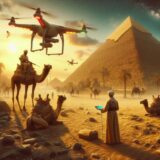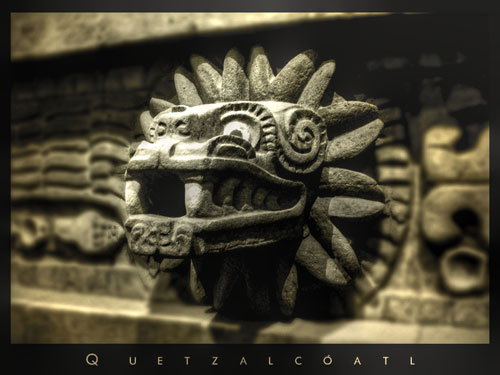
A while ago, I promised myself and my readers to extend the scope of this blog beyond the realm of Anglo-Saxon/Celtic/Nordic culture, with a dash of classical Greek and Roman, which we usually associate with the Fantasy genre.
So in the next few blogs, I will have a look at magical birds. Birds are seen as messengers between the human realm and the supernatural in many cultures. They are often a symbol of renewal – like the Greek bird Phoenix – or they carry prophetic messages. The demarcation line between the magical bird and the dragon is sometimes rather fluid.
Starting in the far west, we find Quetzalcoatl – the feathered snake – who was venerated in many pre-Columbian American cultures, from the Aztecs to the Maya. Quetzalcoatl is the Nahuatl name – the language of Central Mexico. The Mayan equivalent is Kukulkan.
Depictions of Quetzalcoatl first appear on one of the pyramids in Teotihuacán, a political and religious centre in central Mexico in the 2nd century AD. Heads of the feathered serpent alternate with heads of the rain god Tlaloc, who is often seen as Quetzalcoatl’s ally.
Among the Aztecs, Quetzalcoatl was related to gods of the wind, of the planet Venus, of the dawn, of merchants and of arts, crafts and knowledge.
Quetzalcoatl is usually envisaged as some form of cross between the quetzal bird – with its bright emerald green and ruby red plumage – and a rattlesnake. But the deity could also take human form. In this case, Quetzalcoatl will often have a bird’s head, or wear a beaked mask.
Europeans sometimes made a connection between Quetzalcoatl and Jesus Christ – some elements of the legend of Quetzalcoatl show parallels with the life of Jesus, for instance his birth from a virgin, or the association with the Morning Star. The deity has also made a comeback in New Age spirituality.
Meanwhile, stories of Quetzalcoatl and of Kukulkan seem to remain alive and kicking in their original cultural context among the descendants of the ancient Mexican people, and the Maya.
I was rather surprised by the amount of images of Quetzalcoatl which is available on DeviantArt. A good contingent of Mexican and other Latin American artists this time, as was to be expected – but the deity also seems popular with artists who have no direct cultural connection.









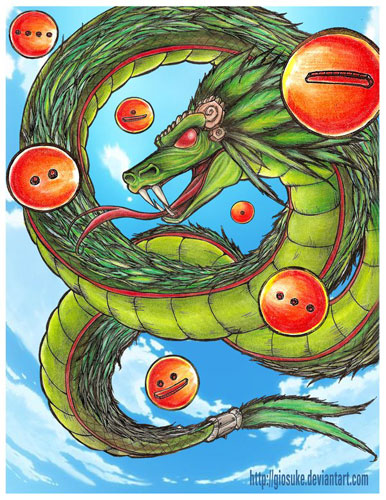
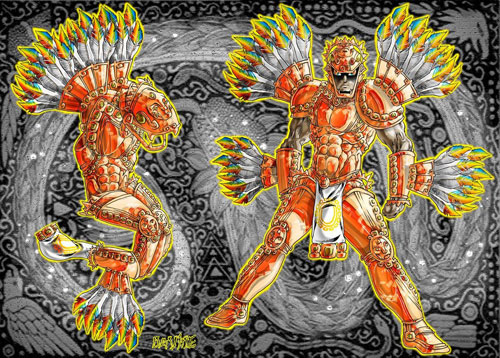
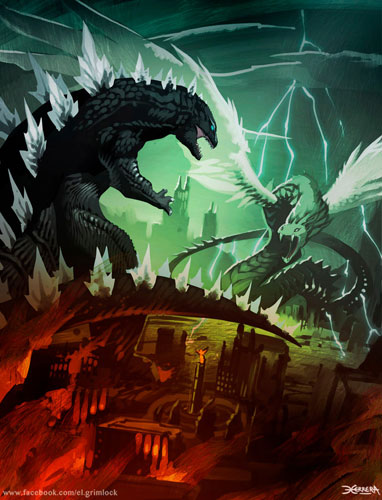
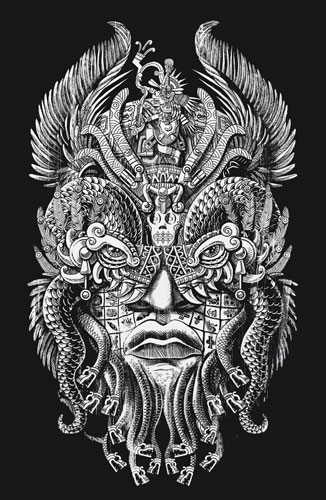

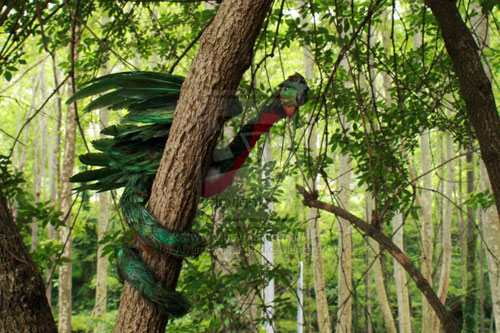
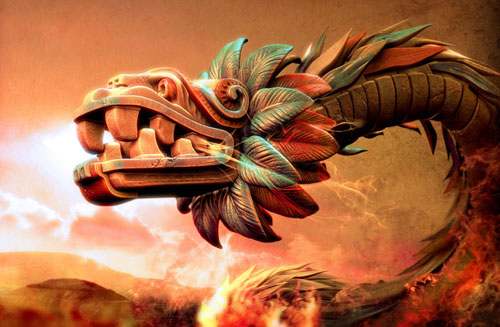
All images are copyright the respective artists, and may not be reproduced without permission.








